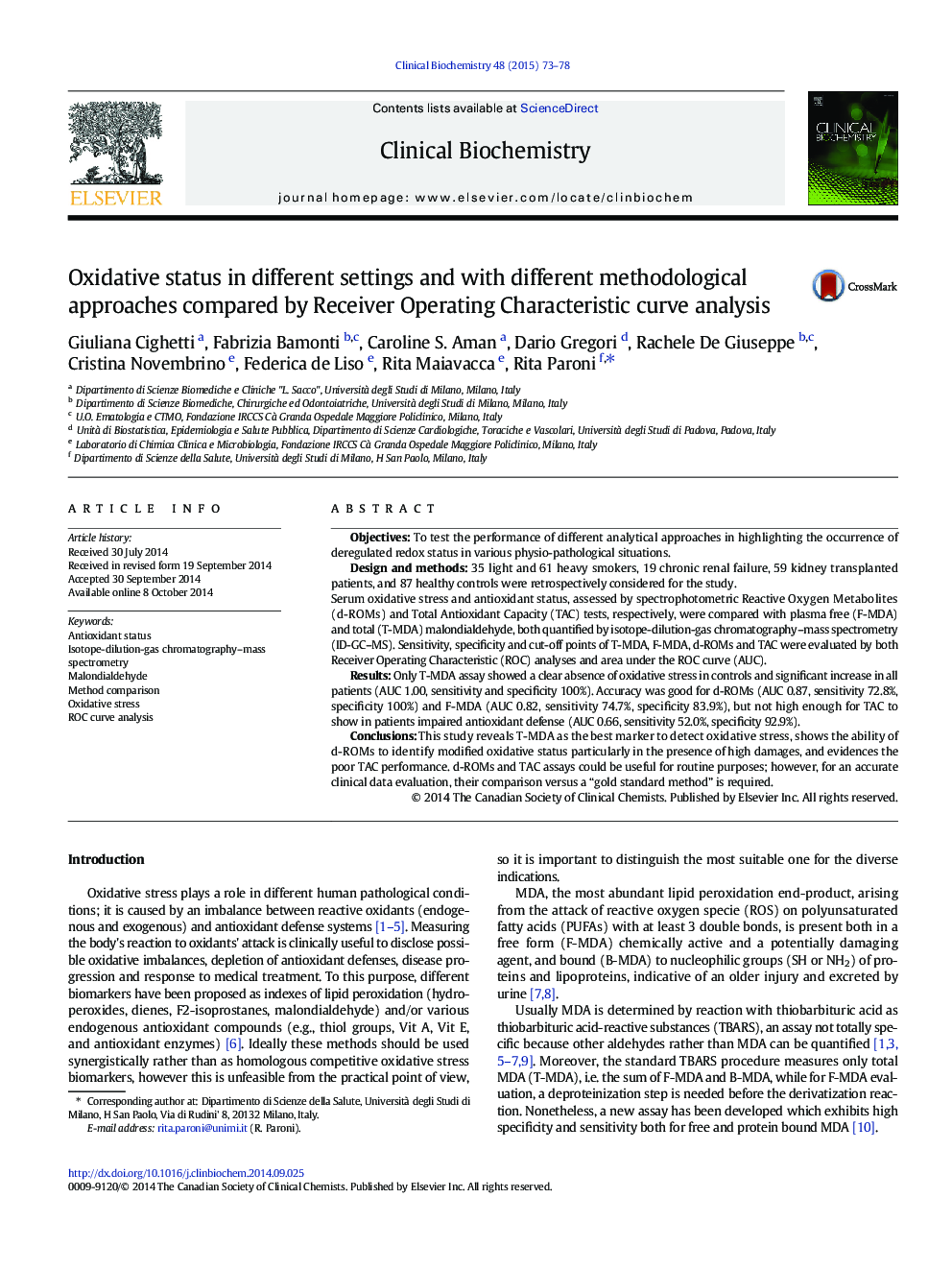| کد مقاله | کد نشریه | سال انتشار | مقاله انگلیسی | نسخه تمام متن |
|---|---|---|---|---|
| 1969056 | 1538870 | 2015 | 6 صفحه PDF | دانلود رایگان |
• The most reliable oxidative stress biomarker was searched in different groups of patients.
• T-MDA by ID-GC–MS proved to be the most valid oxidative stress biomarker.
• TAC and d-ROMs assays together give the balance/unbalance of oxidative status.
• TAC and d-ROMs are easy, suitable for screening and useful for clinical routine.
• Commercial assays need to be validated against corresponding “gold standard method”.
ObjectivesTo test the performance of different analytical approaches in highlighting the occurrence of deregulated redox status in various physio-pathological situations.Design and methods35 light and 61 heavy smokers, 19 chronic renal failure, 59 kidney transplanted patients, and 87 healthy controls were retrospectively considered for the study.Serum oxidative stress and antioxidant status, assessed by spectrophotometric Reactive Oxygen Metabolites (d-ROMs) and Total Antioxidant Capacity (TAC) tests, respectively, were compared with plasma free (F-MDA) and total (T-MDA) malondialdehyde, both quantified by isotope-dilution-gas chromatography–mass spectrometry (ID-GC–MS). Sensitivity, specificity and cut-off points of T-MDA, F-MDA, d-ROMs and TAC were evaluated by both Receiver Operating Characteristic (ROC) analyses and area under the ROC curve (AUC).ResultsOnly T-MDA assay showed a clear absence of oxidative stress in controls and significant increase in all patients (AUC 1.00, sensitivity and specificity 100%). Accuracy was good for d-ROMs (AUC 0.87, sensitivity 72.8%, specificity 100%) and F-MDA (AUC 0.82, sensitivity 74.7%, specificity 83.9%), but not high enough for TAC to show in patients impaired antioxidant defense (AUC 0.66, sensitivity 52.0%, specificity 92.9%).ConclusionsThis study reveals T-MDA as the best marker to detect oxidative stress, shows the ability of d-ROMs to identify modified oxidative status particularly in the presence of high damages, and evidences the poor TAC performance. d-ROMs and TAC assays could be useful for routine purposes; however, for an accurate clinical data evaluation, their comparison versus a “gold standard method” is required.
Figure optionsDownload as PowerPoint slide
Journal: Clinical Biochemistry - Volume 48, Issues 1–2, January 2015, Pages 73–78
